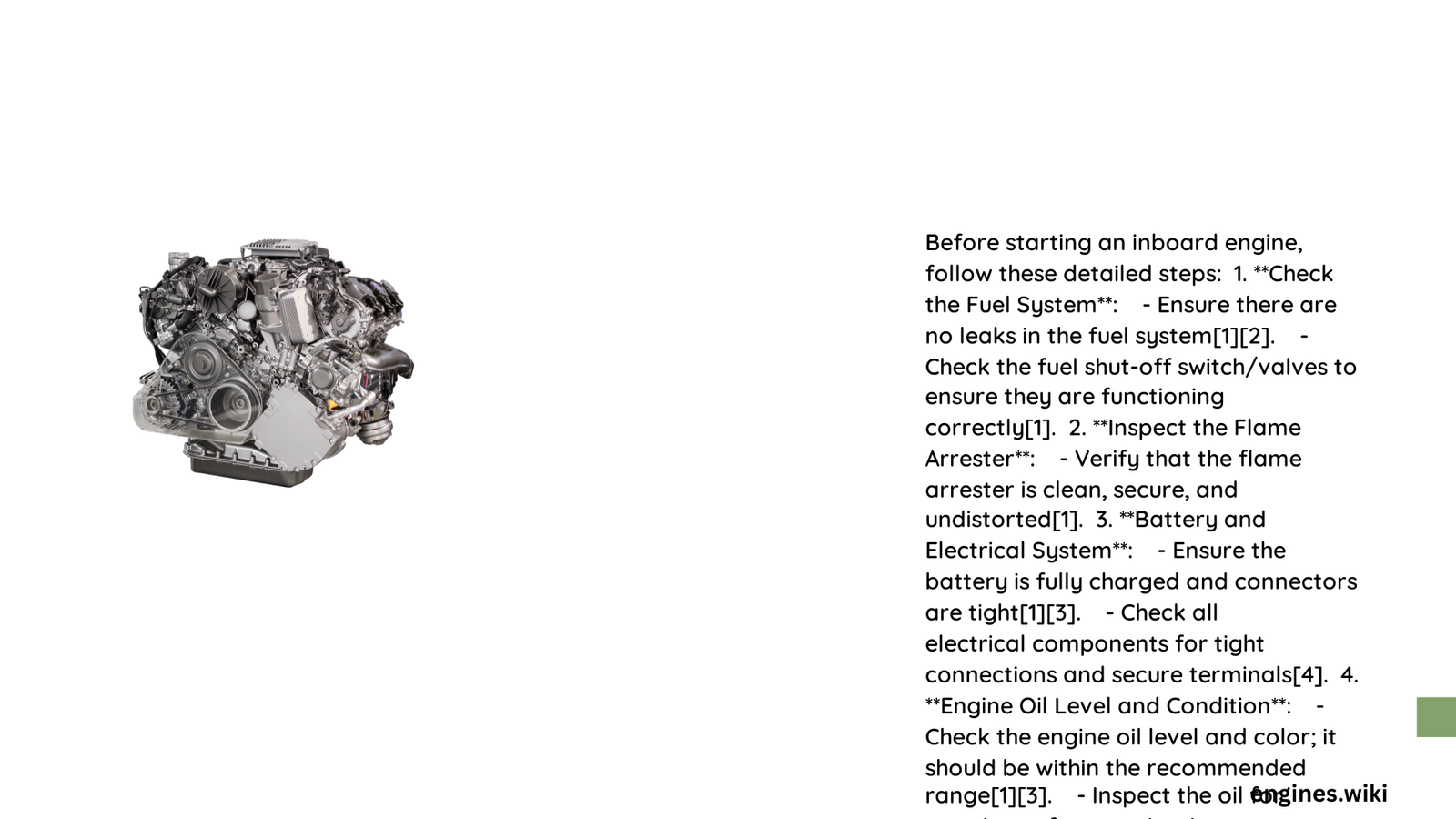Starting an inboard engine requires meticulous preparation to ensure optimal performance and prevent potential mechanical failures. Before turning the key, boat owners must systematically inspect fuel systems, verify battery connections, evaluate cooling mechanisms, and conduct comprehensive equipment assessments. This detailed pre-start protocol helps prevent unexpected breakdowns, reduces potential safety risks, and extends the overall lifespan of your marine propulsion system.
Why Pre-Start Checks Matter for Inboard Engines?
Marine engines operate in challenging environments where precision and preparation are crucial. Neglecting pre-start checks can lead to catastrophic failures, expensive repairs, and potentially dangerous situations on the water. Professional mariners understand that a few minutes of thorough inspection can save hours of potential troubleshooting and significant repair costs.
What Fuel System Components Require Inspection?

Fuel Level and Quality Assessment
- Minimum Fuel Requirements: Maintain fuel levels above the halfway mark
- Contamination Check:
- Inspect primary fuel filter glass bowl
- Look for water or debris accumulation
- Verify fuel color and clarity
Fuel Line Integrity Verification
| Component | Inspection Criteria | Recommended Action |
|---|---|---|
| Fuel Lines | Visual damage check | Replace if cracks/wear detected |
| Shut-off Valve | Proper positioning | Confirm “on” position |
| Filter Condition | Cleanliness | Replace if contaminated |
How to Evaluate Battery Connections?
Battery Health Diagnostics
- Check terminal connections for:
- Secure attachment
- Corrosion-free surfaces
-
Proper torque (10-15 Nm)
-
Voltage measurement:
- Use multimeter
- Confirm 12.6V for fully charged 12V system
- Verify consistent electrical performance
What Cooling System Elements Need Attention?
Coolant System Comprehensive Check
- Temperature Requirements:
- Main engines: Minimum 60°C (140°F)
-
Auxiliary engines: Minimum 40°C (104°F)
- Check when engine is cool
- Ensure level near fill line
- Use 50/50 antifreeze/water mixture
Hose and Belt Inspection
- Examine cooling hoses for:
- Wear indicators
- Potential leaks
-
Material degradation
-
Drive belt assessment:
- 1/2 inch flex in longest section
- Check tension and condition
Critical Pre-Start Preparation Steps
Final Verification Checklist
- ✓ Fuel system integrity
- ✓ Battery connection security
- ✓ Cooling system readiness
- ✓ Visual equipment inspection
- ✓ Electrical system functionality
Expert Recommendations
Professional marine mechanics emphasize that consistent, methodical pre-start checks are more than a routine—they’re a critical safety protocol. Developing a systematic approach transforms potential risk into reliable performance.
Pro Tips
- Document each inspection
- Use calibrated tools
- Replace components showing wear
- Maintain maintenance logs
Common Mistakes to Avoid
- Skipping comprehensive checks
- Ignoring minor wear indicators
- Postponing necessary replacements
- Operating without proper preparation
By following these detailed guidelines, boat owners can significantly enhance their inboard engine’s reliability, performance, and longevity.
Recommended Tools
- Multimeter
- Torque wrench
- Flashlight
- Inspection mirror
- Gloves and safety glasses
Conclusion
Thorough pre-start checks are the cornerstone of responsible marine engine management. Investing time in meticulous preparation ensures safe, efficient, and dependable maritime experiences.
